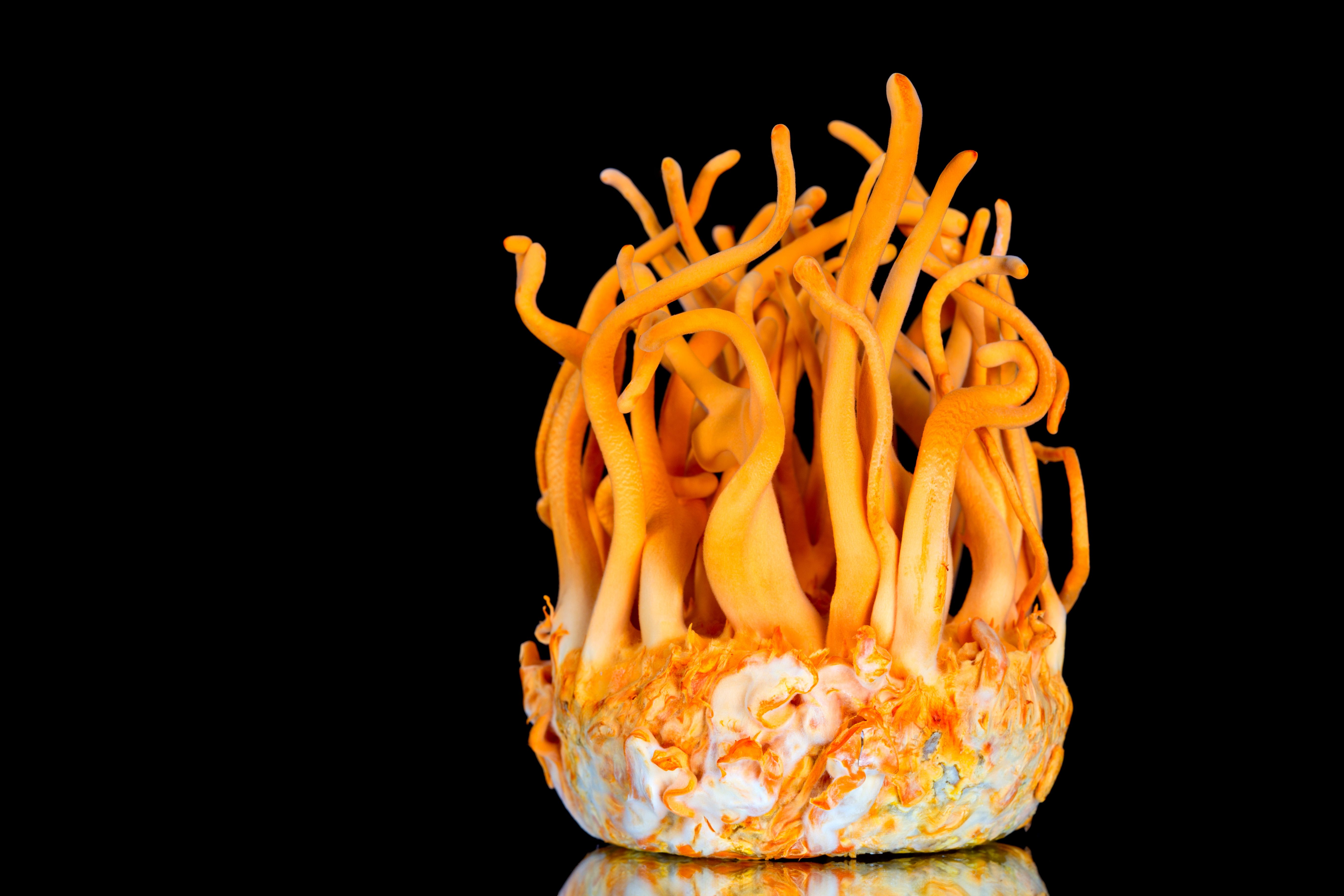Reflectance Spectroscopy Tested for Identifying Fungi Species
A recent study led by Henryk Ratajkiewicz of the Poznan University of Life Sciences in Poznań, Poland tested how multidimensional discriminant analysis and reflectance spectroscopy can help identify species within fungi strains. The team’s research was published in Spectrochimica Acta Part A: Molecular and Biomolecular Spectroscopy (1).
Fresh Cordyceps militaris in Glass bottles | Image Credit: © gee1999 - stock.adobe.com

Approximately 120,000 fungi species have been discovered, putting the total number of fungi at more than 1.5 million. To properly identify species, scientists must find measurable features and traits that distinguish one species from another. Within the past decade, techniques used for isolating and identifying entomopathogenic fungi have evolved. Rather than focusing on morphological characterization, now scientists use more molecular techniques, which have become more widely used for genotypic identification (1). These techniques usually deploy polymerase chain reaction-based amplification of different DNA or RNA fragments. Some of these techniques can also be used in diversity studies, improving basic knowledge about entomopathogenic fungi.
For this study, the scientists investigated whether intraspecific differences can be detected in two closely related entomopathogenic species, Cordyceps farinosa and Cordyceps fumosorosea, using ultraviolet A to shortwave infrared (UVA-SWIR) reflectance spectra. Phylogenetic analysis of all the strains used in the study revealed a high degree of uniformity among the populations of both species. The team also determined the characteristics that resulted from either species variation or culture aging. Fungi were cultured on PDA medium, with the scientists then measuring the reflectance of mycelia in the 350–2500 nm range after 10 and 17 days (1). The measurements were subsequently subjected to quadratic discriminant analysis (QDA) to identify the minimum number of bands containing meaningful information.
Following these procedures, the scientists found that when they knew the age of a fungal culture, species represented by a group of varying strains could be distinguished with only 3–4 wavelengths, compared to needing 7–8 wavelengths when not knowing the age of a culture. At least 6–8 bands were needed to distinguish cultures of a known species among different age groups; however, distinguishing all strains within a species proved more demanding. For C. fumosorosea, at least 10 bands were required, and for C. farinose, 21 bands. These findings show that using point reflectance spectroscopy for fungal differentiation, when intraspecific and age variations are considered, can provide reliable results.
Reference
(1) Jasiewicz, J.; Pierkarczyk, J.; Stępién, Ł.; Tkaczuk, C.; et al. Multidimensional Discriminant Analysis of Species, Strains and Culture Age of Closely Related Entomopathogenic Fungi Using Reflectance Spectroscopy. Spectrochim. Acta Part A: Mol. Biomol. Spectrosc. 2024, 313, 124135. DOI: 10.1016/j.saa.2024.124135
Newsletter
Get essential updates on the latest spectroscopy technologies, regulatory standards, and best practices—subscribe today to Spectroscopy.
AI-Powered Fusion Model Improves Detection of Microplastics in the Atmosphere
July 17th 2025Researchers from Nanjing University of Information Science & Technology have introduced a breakthrough AI-enhanced multimodal strategy for real-time detection of polyamide microplastics contaminated with heavy metals.
Integrating Spectroscopy with Machine Learning to Differentiate Seed Varieties
July 15th 2025Researchers at the University of Belgrade have demonstrated that combining Raman and FT-IR spectroscopy with machine learning algorithms offers a highly accurate, non-destructive method for identifying seed varieties in lettuce, paprika, and tomato.
Drone-Mounted Infrared Camera Sees Invisible Methane Leaks in Real Time
July 9th 2025Researchers in Scotland have developed a drone-mounted infrared imaging system that can detect and map methane gas leaks in real time from up to 13.6 meters away. The innovative approach combines laser spectroscopy with infrared imaging, offering a safer and more efficient tool for monitoring pipeline leaks and greenhouse gas emissions.